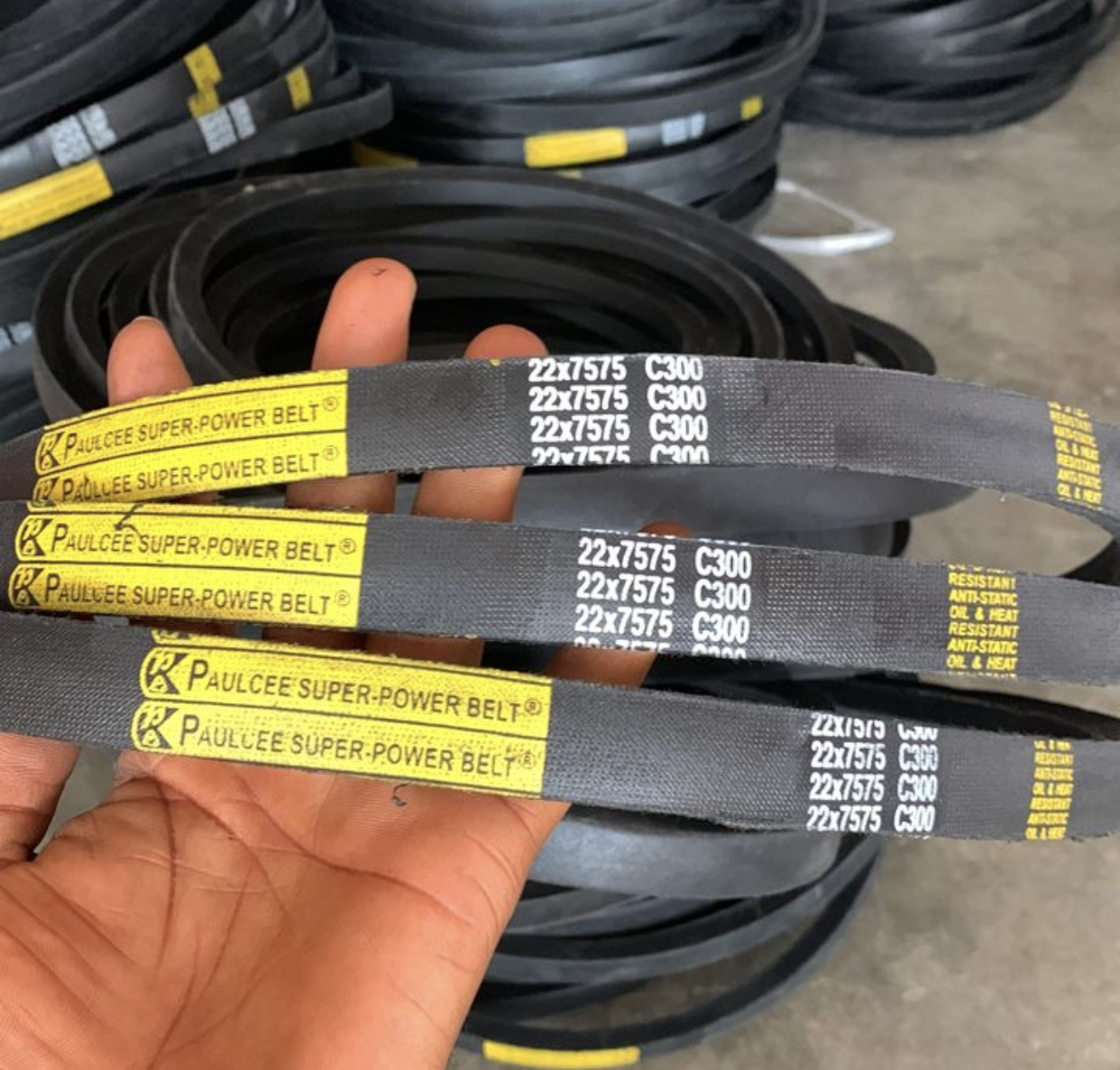What does timing belts do?
The timing belts plays a crucial role in heavy-duty automobiles and industrial machines, orchestrating the synchronization of camshafts to optimize valve opening and closing for seamless operation.
At Paulcee, dealing with the industrial belts dealing with the industrial belts business, we do know that in heavy-duty engines and industry machines, a timing belt failure can have severe consequences, with valves improperly timed and vulnerable to contact with pistons, leading to significant engine damage. Preventing such failures is paramount.
Timing belts feature teeth that coordinate with the crankshaft, timing belts ensure precise timing in the engine. In heavy-duty applications, some vehicles utilize timing belts and chains for enhanced durability, but the rubber compound construction of timing belts offers a quieter and more efficient alternative. Unlike chains, timing belts don’t require lubrication.
Timing belts, the unsung heroes in the realm of heavy-duty automobiles and industrial machines, choreograph an intricate dance within the engine, ensuring the harmonious synchronization of camshafts for optimal valve operation. These belts, distinguished by their toothed design, stand as a pinnacle of precision, offering an indispensable contribution to the seamless functionality of robust engines.
Categories of Timing Belts: A Closer Look
Timing belts are categorized into various types based on their composition and design, each tailored to meet specific demands within heavy-duty applications.
- Rubber Compound Timing Belts:
- Composition: The majority of timing belts in heavy-duty machinery are crafted from a durable rubber compound.
- Functionality: These belts use teeth to synchronize camshafts with the crankshaft, ensuring precise valve timing for efficient engine performance.
- Advantages: Known for their efficiency and quiet operation, rubber compound timing belts provide a reliable alternative to chains.
- Timing Chains in Heavy-Duty Vehicles:
- Durability:* Some heavy-duty vehicles opt for timing chains due to their enhanced durability compared to traditional belts.
- Functionality: Similar to timing belts, these chains facilitate the coordination between camshafts and the crankshaft.
- Considerations: While chains offer increased robustness, they may require periodic lubrication.
Cogged Belts: Unveiling Another Layer of Precision
In addition to traditional timing belts, heavy-duty machinery may leverage cogged belts, also known as notched or toothed belts. These belts, like their counterparts, play a pivotal role in orchestrating the timing of engine components.
- Composition and Structure:
- Toothed Design: Cogged belts feature teeth on their inner surface, providing enhanced grip and precision in power transmission.
- Flexibility: The notched design allows for greater flexibility, adapting to the dynamic demands of heavy-duty applications.
- Applications in Heavy-Duty Machinery:
- Engine Timing: Cogged belts contribute to precise engine timing, preventing slippage and ensuring efficient coordination between camshafts and the crankshaft.
- Heavy Load Handling: The robust structure of cogged belts makes them well-suited for heavy-duty applications, where stability and durability are paramount.
Severe Consequences of Timing Belt Failures: A Cautionary Tale
A failing timing belt in a heavy-duty engine is not merely a maintenance concern; it can unleash severe consequences. When timing belts falter, camshafts lose their synchronization with the crankshaft, jeopardizing the precision of valve opening and closing.
- Engine Damage Risks:
- Valve Timing Impact: Improperly timed valves become vulnerable to contact with pistons, leading to catastrophic engine damage.
- Financial Implications: The aftermath of a timing belt failure often entails extensive repairs, translating to significant financial burdens.
- Importance of Preventive Maintenance:
- Critical Role of Water Pumps: In heavy-duty machinery, where timing belts are omnipresent, preventive maintenance becomes paramount. Considering the shared lifespans, replacing the water pump during a timing belt replacement is a strategic move.
- Cost-Effective Strategy: Proactive measures mitigate the risk of unforeseen breakdowns, potentially saving on installation costs and preventing collateral damage.
In Conclusion: Precision, Categories, and Prudent Maintenance
The intricate symphony conducted by timing belts in heavy-duty machinery underscores their critical role in maintaining engine precision. From the silent efficiency of rubber compound timing belts to the robust grip of cogged belts, each category serves a unique purpose, tailored to the demands of heavy-duty applications.
Even though we look forward to making more sales of our timing belts, we counsel our customers the necessity of preventive measures becomes evident. Regular inspections, timely replacements, and the strategic replacement of associated components, such as water pumps, form the pillars of a reliable and cost-effective maintenance strategy. In the world of heavy-duty machinery, where precision is paramount, timing belts emerge as the silent guardians, ensuring the seamless operation of engines that power industries forward.

